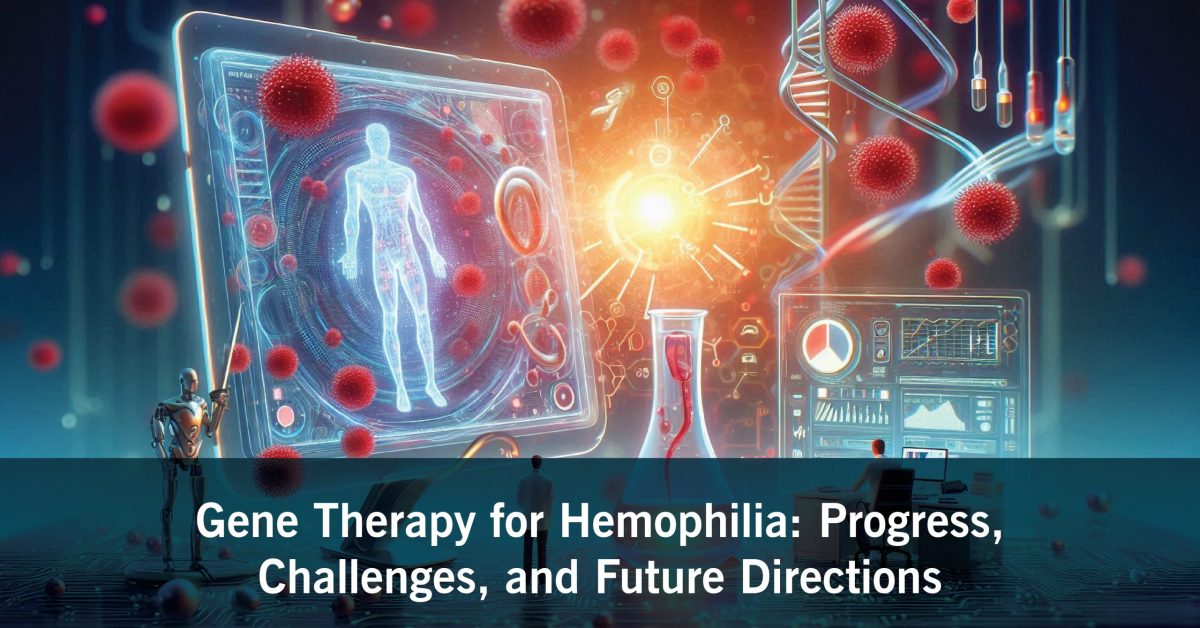Introduction
Hemophilia is an inherited disorder producing a deficiency of clotting factors, either factor VIII or factor IX, and has been a problem in the healthcare arena for many years. This is an inherited coagulation disorder that causes abnormally long, delayed bleeding that may lead to severe joint disorders and life-threatening bleeding episodes. The usual treatment approaches have therefore involved routine prophylactic dosing of clotting factor concentrates despite the cost and the potential development of inhibitors. In the previous years, though, the new advancement of gene therapy has brought new hope wherever it is found in individuals with hemophilia. This approach can be expected to reverse the source of the disease at a genetic level by supplementing functional genes in the patient’s genetic structure, thus having the potential to offer the patient a long-term cure and change the course of treatment for hemophilia. In this review, the author provides an overview of the studies on gene therapy for hemophilia, the hurdles for this new technique, and possible developments in this therapeutic approach.
The Evolution of Gene Therapy for Hemophilia
The historical course of the experimental gene therapy treatments for hemophilia started with the understanding that the nature of this pathology is the absence of a gene, so the prospects for gene replacement therapy are promising. The first historic step towards gene therapy was made with adeno-associated viral (AAV) vectors because they are used as therapeutic gene delivery vehicles because of their capacity to target specific tissues, for instance, the liver, which is required for the synthesis of clotting factors.
The advancement in gene therapy has fared well in the past decade, especially in liver-directed gene therapy by AAV. The first clinical applications were carried out in the treatment of hemophilia B by using AAV vectors and delivering the FIX gene. These trials proved to be successful as there was sustained FIX expression and reduction of bleeding episodes; subsequent strategies have been made similar in hemophilia A due to the improvements derived in vectors and gene constructs, which made it possible to express FIX/FVIII enough to ameliorate severe clinical manifestations of hemophilia.
The first papers devoted to such an approach have shown that stable FIX expression is possible in hemophilia B patients over multiple years, which proves the long-term perspective of gene therapy. More improvements have been made where genes are codon optimized for liver expression and liver-specific promoters are incorporated, which has improved the effectiveness of these treatments, thereby limiting the need for prophylactic infusions of the clotting factors.
